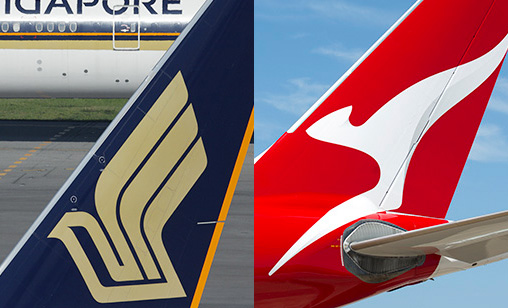News Backgrounder
Complicated journey into the skies for parked aircraft
Thousands of commercial jets around the world are idle. Some may never return to service. Grounding airplanes for any length of time is a complicated process and returning them to the air is not straightforward. Associate editor and chief correspondent, Tom Ballantyne, reports.
June 1st 2021
As the COVID-19 pandemic deepened early last year and air traffic collapsed from border restrictions and quarantine measures, airlines worldwide were faced with tough decisions. Read More » What proportion of their fleets must be pulled from service and where would these grounded aircraft be parked?
In normal times, when market fluctuations required small numbers of aircraft to be mothballed, answers to the above questions were relatively simple. The aircraft could be parked at home bases in hangars owned and operated by their airlines. This time around, the circumstances are very different. The industry crisis created by the pandemic grounded so many planes that vacant aircraft parking spaces were very quickly taken up.
 |
As it became clear the groundings would be lengthy, it was evident the grounded fleets would have to be stored in regions less susceptible to severe weather conditions. Moisture in the air can cause corrosion. Exposure to freezing temperatures can damage tyres. Thus, Singapore Airlines (SIA) and Qantas Airways (QF) decided to park some of their planes in desert locations - in QF’s case at an aircraft storage complex in California’s Mojave Desert. SIA decided to use a facility with a similar climate in Central Australia.
Parking a commercial jet is not the same as putting your car in the garage for a few days. You cannot park and forget. With a jet, long-term grounding can result in component mechanisms losing lubrication, batteries discharging or contamination of potable water systems and fuel tanks. Other risks are loss of pressure in some systems or components such as oxygen cylinders, tyres, hydraulic systems and landing gear shock struts. Long-term grounding means some time-sensitive components, such as batteries, have to be removed from the aircraft.
Engines have to be covered and protected. Special preventative oils are coated onto various parts of the engines to prevent rusting. An aircraft can be damaged by heat, humidity, cold, ice, snow, rain, lightning, hail, wind, sandstorms and insects. While it is parked, external openings have to be covered, including pitot probes, static ports, total air temperature probes and angle-of-attack sensors. Other external openings such as the outflow valve, relief valves, vents, ports and openings must be closed and sealed against environmental effects. Any of these systems are susceptible to a build-up of dust or being entered by insects or small rodents.
Engines, designed to operate regularly, will be spooled up for 15 to 20 minutes every week or two and idled to vaporize any moisture collected in the oil and fuel systems. Auxiliary power units are generally powered up weekly along with flight computers.
Every two weeks electrical systems are run and then checked about once a month. The planes are moved a third of a wheel’s turn to prevent flat spots on tyres. Carpets and seats are examined for mildew. If needed fuel is drained from tanks to prevent water build-up that facilitates bacteria and fungi growth. Every three months the rudder and other control mechanisms are turned on and moved. In hot weather doors are opened to provide ventilation so cabins are not damaged by the heat.
Despite the ground maintenance, when the time comes for an aircraft to be return to service, operators can’t suddenly roll up to the gate and accept paying passengers. It can take 120 hours or more of hard work to ensure a plane is in airworthy condition after storage. Extensive testing of each and every system must be conducted to prove the aircraft is performing as designed to fulfill regulatory requirements established for airworthiness.
This procedure is critical because the increased integration and complexity of both hardware and software in modern jets means greater care and attention must be paid to protecting and restoring the airplane after parking. The procedures are extensive, lengthy and specific for aircraft parked for different lengths of time.
The rule book says aircraft system performance and operation must meet the manufacturer’s specification requirements with all components in a serviceable condition and fully functional and it must be in a configuration suitable for flight before the aircraft can be returned to service. In most cases, a functional check flight is required before the jet can resume flying.